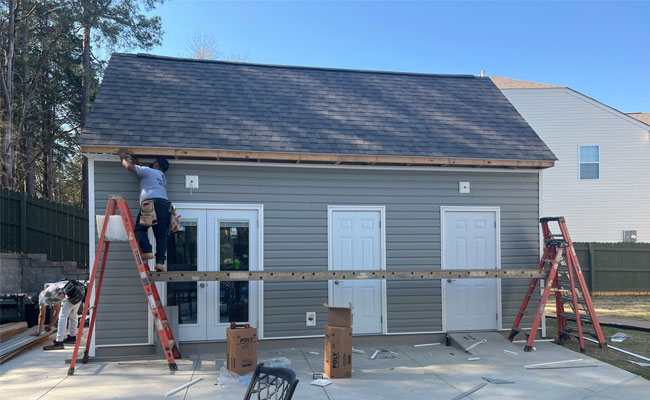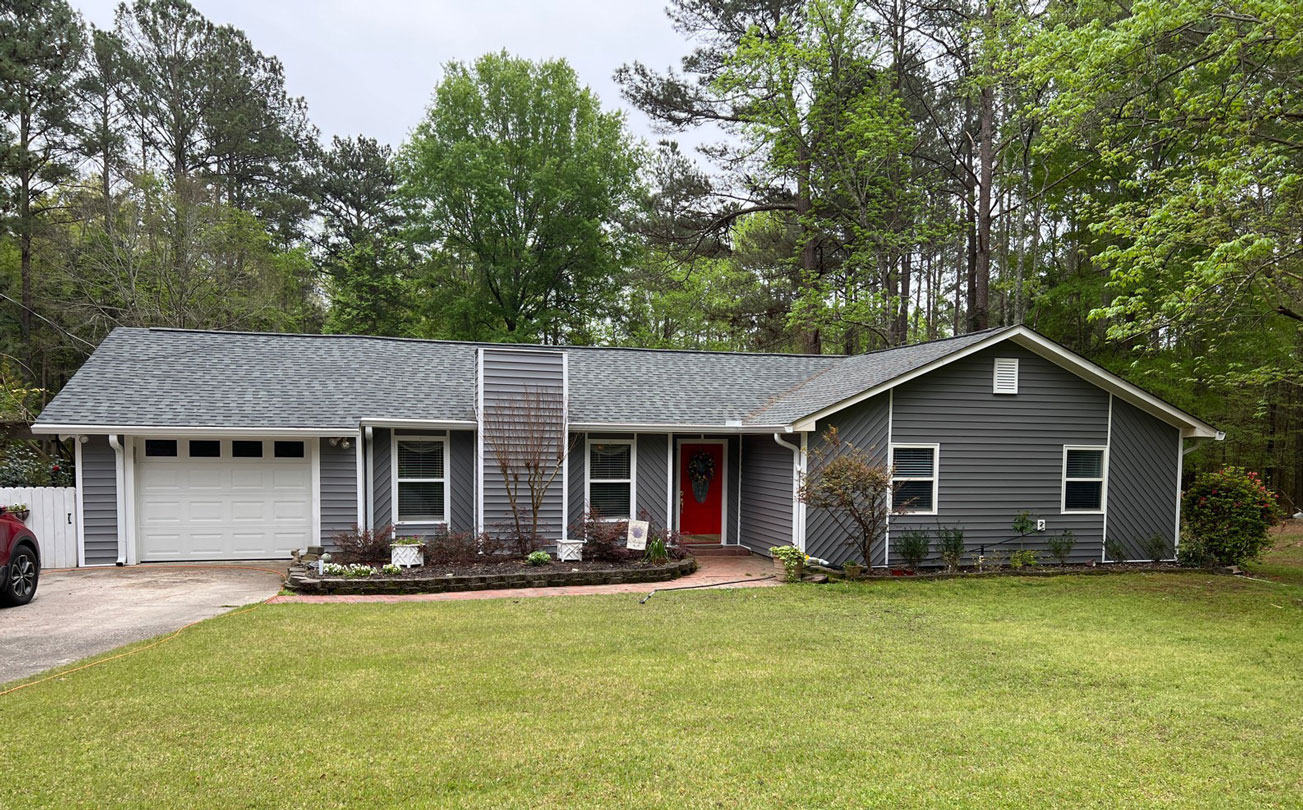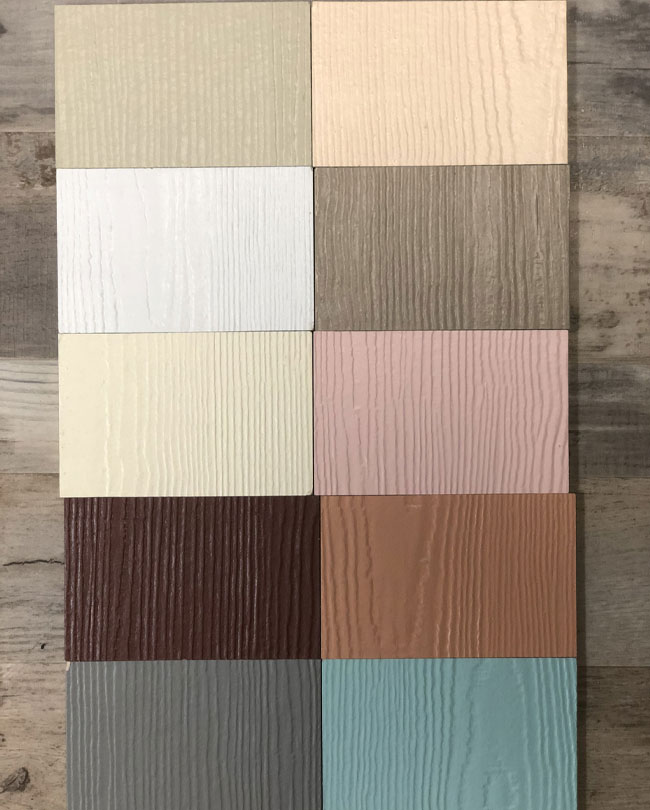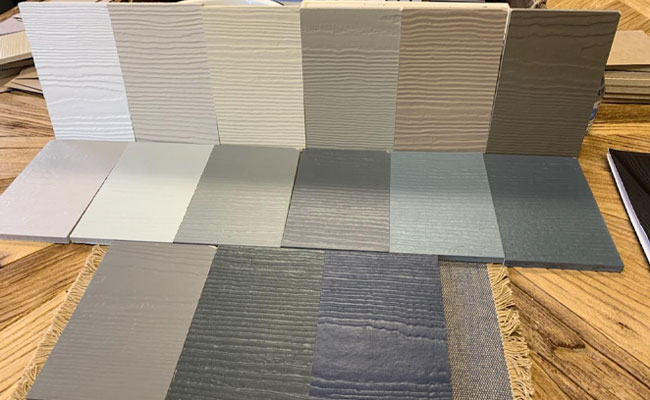The Ultimate Guide to Choosing the Right Siding Color for Your Home
Choosing the right color for your home siding is more than just an aesthetic decision, it defines the personality of your home. The right color scheme can significantly boost your home’s curb appeal, impact your home’s value, and bring a smile to your face every time you arrive home.
But with myriad color options available, how do you make the perfect choice? Whether you’re installing new vinyl siding or simply choosing a new color for your existing siding, the choice can feel daunting! In this ultimate guide, we delve into various considerations that you should bear in mind when selecting the ideal siding color.

Know What Exterior Colors Match the Style of Your Home
One place to begin when choosing a color for your home is to consider its overall style. While your home’s architecture doesn’t necessarily limit your color choices, the following recommendations may help you easily identify colors that pair naturally with your home’s aesthetic:
Craftsman homes, with their emphasis on natural materials, often look best with warm, earthy tones like browns, greens, and deep blues.
Colonial-style homes, characterized by symmetry and simplicity, tend to stand out with classic whites or light neutrals, often accented by bold color on shutters or trim.
Victorian homes, with their intricate details and trim, can handle more vibrant and diverse color combinations, including bold purples, blues, and greens.
Mediterranean homes, inspired by the sea and sun, typically feature warm tones like terra cotta, beige, or yellow, often complemented by vibrant blues.
Farmhouse-style homes pair well with classic white, though modern farmhouses have been embracing darker colors like gray, navy, and even black.
Contemporary homes tend to feature neutral and monochromatic color schemes, but you can also opt for bolder contrasts for a striking modern look.
Cape Cod-style homes are typically painted in light colors including whites, creams, light blues, and soft grays. Brighter shades, however, can be used sparingly as accent colors on the front door or window frames to add a dash of personality.
Match the Style of Your Neighborhood
While individuality is vital, maintaining harmony with the neighborhood is equally essential. Aim for a balance where your home stands out without clashing with the surroundings. Examine the common color themes in your neighborhood and select a color that complements them.
It’s always a good idea to check your neighborhood homeowners association bylaws and confirm that there isn’t a color palette that you’ll need to adhere to.
Consider the Current Trends
Trends can serve as a great source of inspiration. Currently, homeowners are leaning towards dark, bold colors like blues, greens, and even blacks. Neutral colors, especially grays and beiges, remain timeless popular color choices.
Just remember that while trends are exciting, they should not entirely dictate your choice. Oftentimes the trendiest colors are the colors that will look dated most quickly.

Compare Warm vs. Cool Colors
Your color choice can fall into either warm or cool shades. Warm colors like reds, oranges, and yellows can make a large house seem cozier, while cool colors like blues, greens, and purples can make a smaller house appear larger. Consider your home’s size and the message you wish to convey when choosing.
Selecting Accent Colors
Accent colors, though used sparingly compared to your primary siding color, can have a significant impact on the overall look of your home. These colors, typically used on features such as doors, window trims, shutters, soffits, and fascias, can either create a harmonious blend or offer a dramatic contrast. Here’s how to make the right choice:
Using Color Theory For Accents
To start, it’s essential to understand some basic color theory. The color wheel, split into warm and cool hues, can help you identify complementary colors – those that are directly opposite each other on the wheel, analogous colors – those that are adjacent to each other, or a monochromatic scheme that involves varying shades of a single color.
Using a color wheel, you can easily determine which colors will harmonize or contrast nicely with your primary siding color.

Again, Consider Home’s Architectural Style
Your home’s architectural style should also influence your choice of accent colors. For instance, Victorian homes often use a more diverse color scheme, enabling the use of multiple accent colors to highlight architectural details. On the other hand, Craftsman homes often stick with earthy tones, using darker or lighter shades of the primary color as trim colors.
Reflect on the Desired Impact
Think about the effect you want your accent colors to have. If you want to draw attention to particular features, such as your elaborate woodwork or shutters, choose accent colors that contrast sharply with the primary color. If you prefer a more understated look, go with colors that are a few shades darker or lighter than your siding.
Remember That Landscaping is Part of Home Design
Landscaping is an oft-overlooked aspect that influences the choice of siding color for your home. It creates a broader visual field that includes the natural surroundings, which should be factored in while selecting colors. Here’s how landscaping can influence your decision:
Reflecting the Natural Environment
The color of your siding should ideally reflect your home’s natural environment. For instance, if you’re surrounded by lush greenery, earth tones like greens, browns, or soft yellows could help your house blend with the surroundings. If your home is located near the ocean, shades of blue or sandy tones can complement the setting.
Complementing Plant and Flower Colors
Take into account the colors of the plants and flowers in your yard. If your garden showcases a variety of colorful blooms, a neutral or subdued siding color can provide a calm backdrop and let the flowers take center stage. On the other hand, if your lawn mainly features green foliage, you might consider a more vibrant siding color to add some contrast.
Keep Seasonal Changes in Mind
In areas where seasons significantly alter the landscape, consider how your siding color will look against these changes. A color that looks great against summer greenery might appear stark during a snowy winter. Opting for siding color that complements your yard throughout the seasons can enhance your home’s appeal year-round.

Consider Your Roof Color
Your siding should harmonize with your roof color. A brown or tan roof works well with warm siding colors, while a gray or black shingle roof pairs well with cooler colors.
If your roof has more of a bold hue, like blue or green, you might want to opt for more neutral siding colors to prevent a clash. In contrast, a roof with a more neutral tone gives you the liberty to experiment with a wider range of siding colors.
Additionally, the texture of your roof—whether it’s sleek metal, traditional shingles, or rustic clay tiles—can also influence the siding color choice. For instance, a modern, shiny metal roof may look best with contemporary, clean colors, while a weathered wooden shingle roof might pair well with more traditional or rustic color schemes.
Go Beyond Paint Swatches
While paint swatches can provide a general sense of a color, they don’t always offer an accurate representation of how a particular shade will look on your home’s siding. Lighting conditions, surrounding colors, and even the texture of your siding material can all significantly impact how a color looks on your home.

Seeing the Color in Real World
Applying paint samples allows you to see how your chosen color will look in the real context of your home. A color can look vastly different when applied to your siding compared to a small swatch. When it is surrounded by the colors of your roof, landscaping, and neighboring homes, a paint color may appear lighter, darker, or a different hue entirely!
Examine How Sunlight Affects Colors
Colors can appear differently under various lighting conditions. A shade that seems perfect in the morning light might not be as appealing in the afternoon sun or under artificial lighting in the evening. By applying a sample directly to your home, you can observe how the color changes throughout the day and under different weather conditions.
Comparing Multiple Colors
Painting sample areas with different colors can also be beneficial if you’re having trouble deciding between a few options. You can paint a section of your siding with each color and then compare how they look in relation to each other and the rest of your home’s exterior.
Picking the Perfect Color
Choosing the best siding color for your home involves balancing various factors, from architectural style and neighborhood compatibility to current trends and natural surroundings. It might seem overwhelming, but with careful consideration and a bit of creativity, you can select the right siding color that not only enhances your home’s exterior but also reflects your unique style and personality.
Finally, while these rules of thumb may help you choose a new siding color – you should choose a color that makes you happy!
